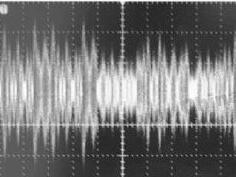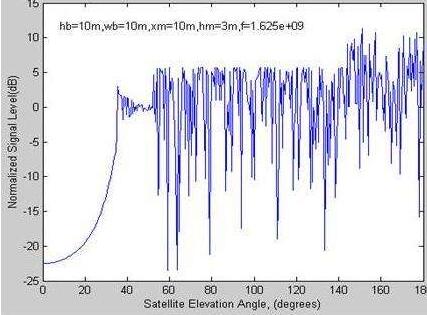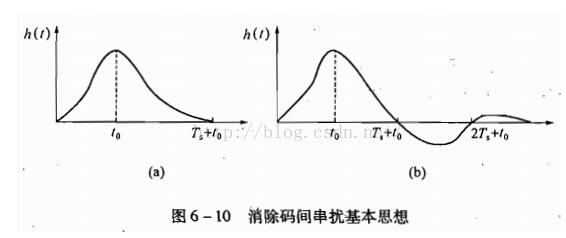At a sampling instant, the amplitude value of the neighboring symbol at this point is not 0, resulting in interference to the current symbol sample. That is to say, the sample value obtained at the sampling point includes not only the amplitude value of the current symbol but also the amplitude value of the neighboring symbol.
The overall waveform is the result of superimposition of the waveforms of each symbol. In the absence of inter-symbol interference, it is less accurate to say that the waveforms of different symbols do not overlap in the time domain, say at the time of 1s. Between the 2s moments is a symbol waveform, and then the waveform of the next symbol starts from 2s, and the intersymbol interference is the waveform of the previous symbol and extends to 2s later. More precisely, the inter-symbol interference is that the waveform of the previous symbol extends to the sampling time of the second symbol, say 2.5 s, and thus affects the sampling decision of the second symbol. The condition that there is no overlap "needs to change accordingly to "no overlap at the sampling time."
The reason why we only pay attention to the situation at the sampling time, rather than strictly requiring that there is no overlap between the two waveforms, on the one hand because it is not necessary, the overlap of the waveforms outside the sampling time does not affect the results of the sampling decision. The aspect is also because it is difficult to do this in practical situations.

We assume that the originator uses a bipolar code. When "1" in the sequence of input binary symbols passes through the channel signal former, a positive raised cosine waveform is output, and when the code is input, the "O" code outputs negative. The raised cosine waveforms are shown in (a) and (b) respectively.

When the input binary symbol sequence is 1110, after the actual channel, the signal will have delay and distortion. Under the influence of noise, the waveform obtained at the output end of the receive filter is shown in (c), the first code. The maximum value of the element appears at time tO, and the waveform is dragged wide. At this time, the sampling decision time for this symbol should be chosen at t=t0. By analogy, we will determine the fourth symbol 0 at 3T+t0. It can be seen from the figure that at the moment t=3T+tO, the values ​​of the first symbol, the second symbol, the third symbol, etc. have not disappeared, and this will inevitably affect the decision of the fourth symbol. That is, the timing of the sampling sequence of the first three symbols received by the receiver to the fourth symbol samples affects the sampling decision of the fourth symbol. This effect is called intersymbol interference.

Band limitation: This is the signal transmitted through the channel before passing the sampling decision. After passing through a filter, the bandwidth of the signal input to the sampler is limited compared to the signal before filtering.
Why does band limitation lead to inter-code interference? Because the original waveform is inherently infinitely wide in the frequency domain - for a rectangular pulse signal, the Fourier transform is a sampling function that covers the entire frequency domain; after the filter, the frequency domain is constrained to cause the waveform In the temporal broadening, then the waveforms of two adjacent symbols do not overlap originally. Now due to the “tailingâ€, the waveform of the previous symbol may extend to the waveform of the next symbol. .
2. Multipath effect: This is actually considered. Each component of the same symbol waveform may propagate through different paths. Then the time for different multipath components to reach the receiving end is different, and the first multipath component arrives at the moment and the last one is multiple. There is a time difference between the arrival of the radial components. When the time difference exceeds the width of one symbol, it means that a part of the multipath component of the previous symbol should be transmitted when the symbol should have been transmitted. It has not arrived at the receiving point, but has mixed into the receiving point reached in the multi-path component of the next symbol, thereby causing interference to the next symbol, which has not only its own component but also the component of others.

If you want to eliminate inter-symbol interference, you should

Since an is random, it is not enough to make the inter-symbol interference zero by cancelling each other. This requires the waveform of h(t) to be required. If the waveform of the previous symbol of the adjacent symbol arrives at the moment after the last symbol sampling decision has decayed to 0, the waveform shown in Fig. 6-10(a) can satisfy the requirement. However, such waveforms are not easy to implement because the actual h(t) waveform has a long “tailâ€, and it is the “trailing†of each symbol that causes crosstalk to adjacent symbols, but As long as it is just 0 at the timing of symbol sampling following Ts+t0, 2Ts+t0, etc., inter-symbol interference can be eliminated, as shown in Figure 6-10(b). This is the basic idea of ​​eliminating crosstalk between codes.

1. Use anti-interference patterns.
2, optimize the circuit.
3. Pay attention to EMI/EMC.
This 10 -port USB 3.0 hub design uses 10 USB 3.0 port to extend to your computer, laptop, reader, network camera, moving HDD, Oculus, Oculus, printers and more USB devices.
This USB 3.0 fast data transmission driver The USB 3.0 center synchronization data transmission speed is as high as 5Gbps. Compatible with Windows XP / Vista / Win 7 / Win 8 / Win 10, Mac OS 10, Linux and above, compatible with USB 2.0 Connections.
10 Port Type-C HUB 3.0, USB HUB 3.0 10 Port, 10-Port USB Hub 3.0
shenzhen ns-idae technology co.,ltd , https://www.szbestchargers.com